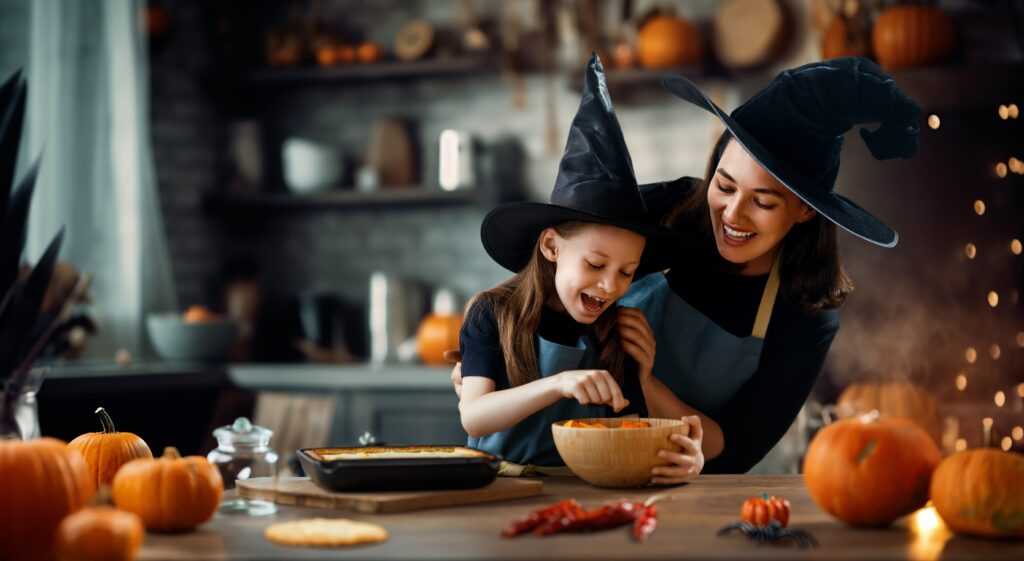Retailers Scaring Up Record Sales for Halloween


Halloween enthusiasts aren’t spooked by inflation or world events. From candy to costumes – for adults, children, and pets – to haunted houses and other one-off events, the Halloween economy is a thriving one. Consumers are expected to spend a record $12.2 billion this year celebrating October 31st, up from last year’s record of $10.6 billion, according to the National Retail Federation (NRF).


Costumes are the biggest driver of spending, accounting for about a third of all money spent. While traditional costumes – think witches, vampires, and ghosts – remain popular, plenty of trick or treaters will be taking inspiration from Mattel’s blockbuster Barbie movie, dressing as one of the many versions of the eponymous star or the ever-faithful Ken.
Wearing costumes is one of the elements of modern Halloween handed down from its origins as the ancient Celtic holiday Samhain, which marked the end of the harvest season. The “veil” between the worlds of the living and the dead was believed to be especially fragile on that night, so people dressed in ways they hoped would frighten wandering spirits. The Irish are credited with bringing Halloween to the United States, starting with the first large wave of immigration in the 1840s.
COSTUMES GO COMMERCIAL
Up until the mid-20th century, costumes were largely homemade. The advent of television and programming aimed at children helped create demand for commercial costumes. Companies started licensing popular characters, and children sought to dress like their TV heroes and heroines. This year, the top kids’ costumes are Spiderman and cartoon character Bluey, according to specialty retailer Spirit Halloween. And for pets, the big sellers are pumpkin, bat, and hot dog regalia.
Candy is a close second as a driver of Halloween spending. Despite urban legends about treats treated with nefarious substances and pushes to distribute healthier snacks, such as fruit or granola bars, kids still haul home plenty of the sugary stuff. Reese’s Peanut Butter Cups, Kit Kats, Skittles, Original M&Ms, and Snickers are the top five favorites, according to Real Simple Magazine. CandyStore.com ranks not only the best candies but the worst, with Circus Peanuts, candy corn, Necco Wafers, Peanut Butter Kisses, and wax soda bottles being the five least-popular candies.
The practice of handing out “treats” evolved from rituals related to the Christian holiday of All Souls’ Day, celebrated on Nov. 2. Children went to houses and offered to pray for the souls of the departed in exchange for some sort of treat, often a kind of cake or pastry. Praying for the dead gave way to children performing a benign “trick” – singing a song or reciting a poem – in exchange for a treat.
Tricks started to take on a more sinister nature in the 1930s, with vandalism becoming increasingly common on Halloween. Some cities sought to ban the holiday. Trick or treating as it’s largely done today – packs of children going from house to house, often accompanied by an adult – was organized by communities as a way to combat the vandalism and help ensure that peace would reign on October 31st. But the nascent habit of handing out candy was curtailed by sugar rationing in World War II.
The lifting of rationing, post-war prosperity, and the building out of suburbs across the country helped breathe new life into the holiday that has its roots in scaring away the dead. The first popular use of the phrase “trick or treat” is thought to have been in a Peanuts cartoon in 1951, though the cartoon is not credited with originating the phrase.
Candy companies seized the opportunity to capitalize on children’s appetite for sugar and fun and heavily promoted the traditions associated with Halloween, boosting the holiday’s status. As a holiday, it is No. 1 for spending on candy, edging out Easter, and is second only to Christmas for overall consumer spending.
The evolution and resilience of the Halloween economy are a testament to the twin powers of tradition and commercialization. It’s also proof that Americans have a strong appetite for candy, fun, and escaping the mundane – even if only for one night.